I always have an open mind to look for science everywhere, by accident I left a butter outside the fridge and my apartment is very hot so it didn't take 3 days and I was already full of blackheads! I had the intuition that I was in the presence of an almost microscopic miniscule "fungus"; my curiosity aroused and I decided to investigate everything about this species and ended up running into (Rhizopus stolonifer), I had never seen it with much magnification so you will be surprised with my finding!👨🏫🔬
Siempre tengo la mente abierta para buscar ciencia en todas partes, por accidente deje una mantequilla afuera de la nevera y mi departamento es muy caliente por lo que no pasaron 3 dias y ya estaba llena de puntos negros! tenia la intuicion que estaba en presencia de un "hongo" minisculo casi microscopico; mi curiosidad desperto y decidi investigar todo sobre esa especie y acabe por toparme con (Rhizopus stolonifer), nunca la habia visto con mucho aumento asi que te sorprenderas con mi hallazgo!🧫🧪🔬

Size??🙇♂️🍄/ Tamaño??🔬📚
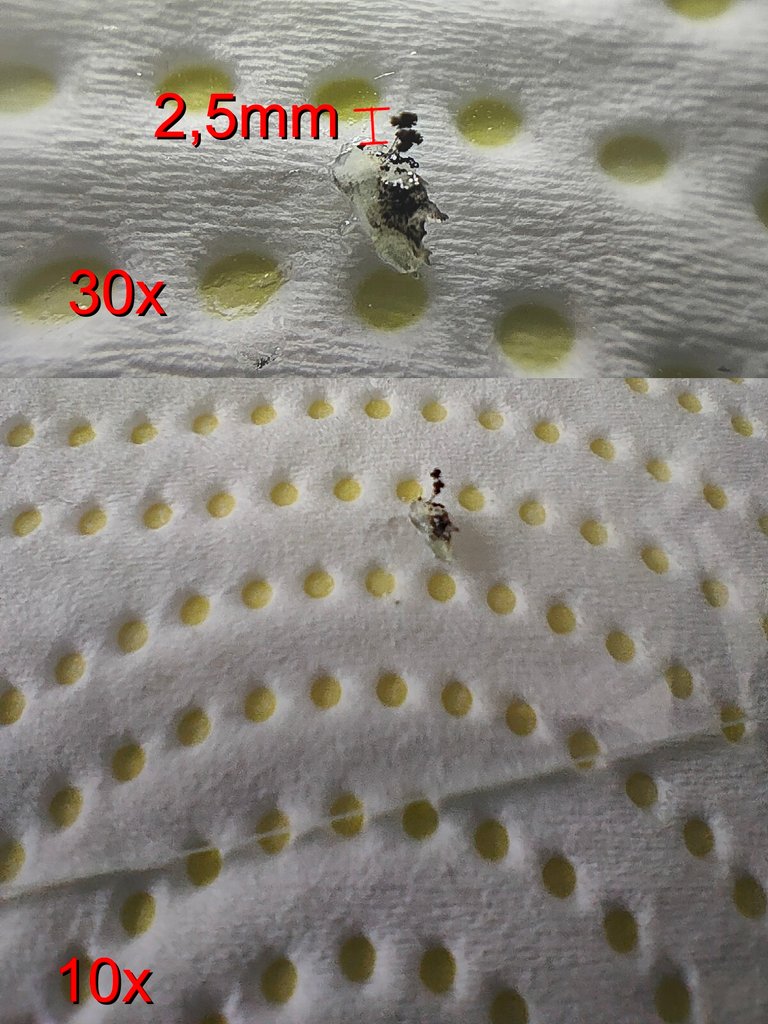
Wow I had to use all my accessories to be able to see the real size of the (Rhizopus stolonifer), I used the macro option of my cell phone along with an accessory magnifying glass that has a total of 20-30x, depending on the morphological description of this tiny fungus it can measure up to "2.5 millimeters long" and "width only 20 μm, therefore with the naked eye it is impossible to see its width, it may look nice and interesting under the magnifying glass but this species can be a "parasite" of tissues vegetables by accelerating the breakdown of "fruits, vegetables" and it makes total sense to find it in butter since it is plant-based!(1)🙇♂️😮
Vaya tuve que usar todos mis accesorios para poder ver el tamaño real del (Rhizopus stolonifer), use la opcion de macro de mi telefono celular junto con una lupa de accesorio que tiene un total de 20-30x, segun la descripcion morfologica este diminuto hongo puede llegar a medir unos "2,5milimetros de largo" y de "ancho tan solo 20 μm por tanto a simple vista es imposible ver su ancho, puede parecer bonito e interesante bajo la lupa pero esta especie puede ser un "parasito" de tejidos vegetales acelerando la descomposicion de "frutas, vegetales" y tiene total sentido encontrarlo en la mantequilla ya que es de origen vegetal!(1)👨🏫🧠🧪

Description??🙇♂️🍄/ Descripcion??🔬📚
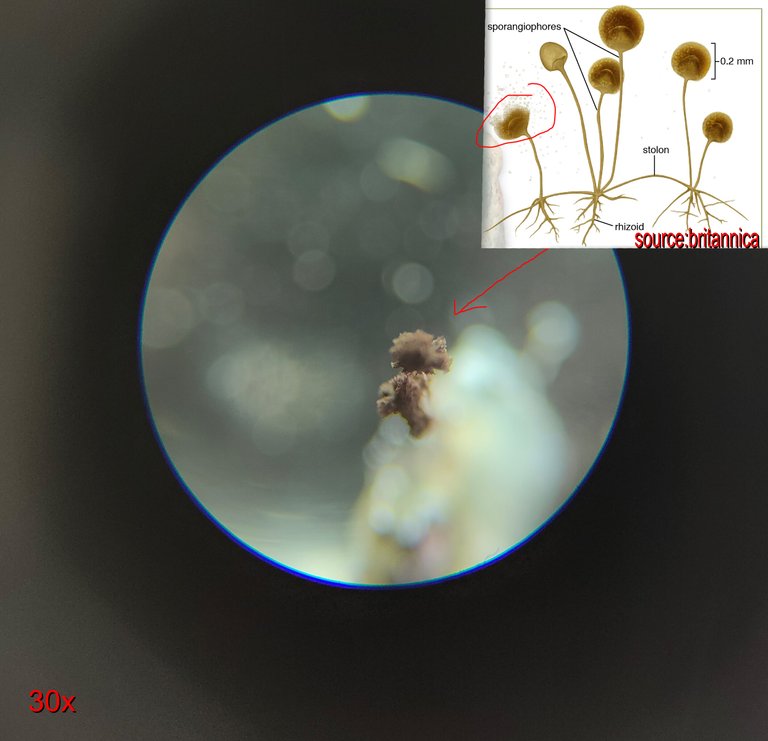
This fungus, unlike other poisonous ones, is not deadly and is almost harmless to our body! when it was first identified it was called "black bread mold" because that's where it was first grown for study! belongs to the genus "Rhizopus" which are those fungi that we can get anywhere on the planet being large cosmopolitans, "common in the soil, fruits, vegetables, animal excrement" these fungi have a common structure called "sporangia"(1)🙇♂️🔬🍄
Este hongo a diferencia de otros venenosos no es mortal y casi es inofensivo a nuestro organismo! cuando se identifico por primera vez fue llamado "moho negro del pan" porque fue alli donde se cultivo por primera vez para ser estudiado! pertenece al genero "Rhizopus" que son aquellos hongos que podemos conseguir en cualquier parte del planeta siendo grandes cosmopolitas, "comunes en el suelo, frutas, vegetales, excremento animal" estos hongos tienen una estructura en comun denominada "esporangios"(1)😮🕵️♂️🔬🧫

Despite not being lethal, care must be taken when handling and ingesting it, since it can be allergic to some people. Its means of "reproduction" is by air and it releases its spores into the air. Few know but this fungus is widely used in the "industrial microbiology" for "cortisone" production, was first discovered in 1818 by "Ehrenberg".🕵️♂️🙇♂️🧠
Apesar de no ser letal hay que ser cuidadosos con su manipulacion e ingesta ya que en algunas personas puede ser alergico, su medio de "reproduccion" es por via aerea y liberta sus esporas al aire, pocos conocen pero este hongo es usado mucho en la "microbiologia industrial" para produccion de "cortisona", fue descubierto por primera vez en 1818 por "Ehrenberg".🧫🍄🍄

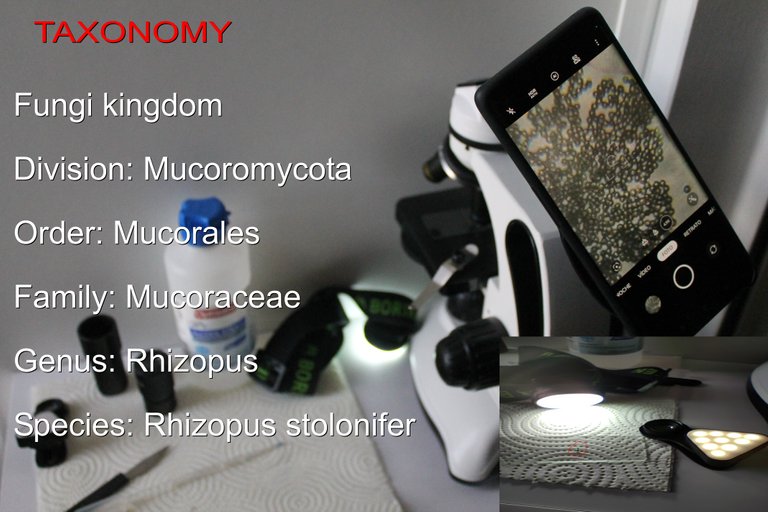
As you can see, the species belongs to the kingdom: (Fungi), in turn grouped to the family: (Mucoraceae) they are characteristic because they have a "branched" stem and instead of a root they have "rhizoids" that practically have the same function to anchor themselves to the substrate and give stability, they are rarely used to absorb nutrients like a normal root!(1)🕵️♂️🌻👨🏫🍄
Como puedes ver la especie pertenece al reino: (Fungi), a su vez agrupado a la familia: (Mucoraceae) son caracteristicos porque tienen un tallo "ramificado" y en vez de raiz tienen "rizoides" que practicamente tienen la misma funcion anclarse al sustrato y dar estabilidad, rara vez no son usados para absorber nutrientes como una raiz normal!(1)🧫🔬🙇♂️🧠

Structure??🙇♂️🍄/ Estructura??🔬📚

I managed to photograph the complete structure of the black mold, and as you can see we start with the upper part which is the (sporangium) this is the "reproductive" structure because here we get the spores, then we have the (sporangiophore) it would be an alternative to the " "stem "and that joins with the stolon and the sporangium, therefore it is a support! then we see the stolon which is a horizontal structure that the fungus uses to expand and join with another "stolon" finally the aforementioned rhizoids with are the structure of substrate support (2)👨🏫🔬🌲👨💻📚
Logre fotografiar la estructura completa del moho negro, y como puedes ver comenzamos con la parte superior que es el (sporangium) esta es la estructura "reproductora" porque aqui conseguimos las esporas, luego tenemos el (sporangiophore) seria una alternativa del " "tallo" y que se une con el stolon y el sporangium por tanto es un soporte! luego vemos el stolon que es una estructura horizontal que el hongo usa para expandirse y unirse con otro "stolon" por ultimo las ya mencionadas rizoides con son la estructura de soporte al sustrato (2)💯🤯

Biology??🙇♂️🍄/ Biologia??🔬📚

Something I was able to observe is that under ideal environmental conditions the fungus manages to grow too fast in 2 days it can triple its growth, but when the temperature drops its growth was quite low, therefore it is a species sensitive to temperatures! what makes this species very successful is the combination of nutrient absorption, therefore it can "live" "only with carbon or with nitrogen, or combine both", according to wikipedia the ideal temperature for its growth varies between 25-30 degrees centigrade!(1,2)👨🏫🧠🕵️♂️
Algo que pude observar es que a condiciones ambientales ideales el hongo consigue crecer demasiado rapido en 2 dias puede triplicar su crecimiento, pero cuando baje la temperatura su crecimiento fue bastante bajo por tanto es una especie sensible a las temperaturas! lo que hace a esta especie muy exitosa es la combinacion de absorcion de nutrientes, por tanto puede "vivir" "solo con carbono o con nitrogeno, o combinar ambos", segun wikipedia la temperatura ideal en su crecimiento varia entre 25-30grados centigrados!(1,2)🔬🧫🍄

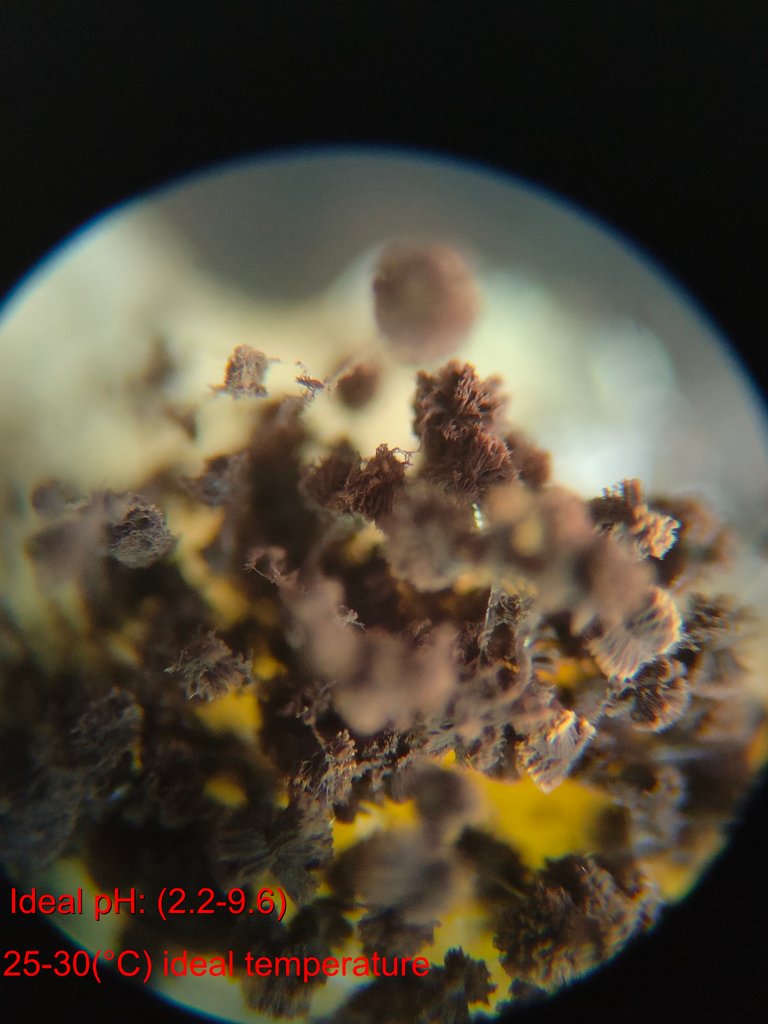
Incredible how the species is quite variable in terms of pH, being able to grow comfortably in an acid medium, something that caught my attention is that ultraviolet light affects its growth, so we think that if we place a bread in a very dry medium with light solar constant he would not grow! That's how important it is for the species to get a humid environment and with little lighting! normal thing in mushrooms since they don't "have leaves" they don't need light and that's why they grow in the ground!(2)😮🧠🤯
Increible como la especie es bastante variable en cuanto el pH pudiendo crecer comodamente en un medio acido, algo que llamo mi atencion es que la luz ultravioleta le afecta en cuanto a su crecimiento entonces pensamos que si colocamos un pan en un medio muy seco con luz constante solar el no creceria! asi de importante es para la especie conseguir un medio humedo y con poca iluminacion! cosa normal en los hongos ya que no "tienen hojas" no necesitan de luz y por eso crecen en el suelo!(2) 🌏👨💻📚


The species does not have a reproductive problem and can do so both sexually and asexually. These species are considered "heterothallic" and require two "compatible" partners to reproduce. The sexes cannot be distinguished based on their size, since the size is proportional to the nutrition of the fungus!(1)🌲🙇♂️🌻
La especie no tiene problema a nivel reproductivo y puede hacerlo tanto sexual como asexualmente a estas especies se les consideran "heterotálica" requieren de dos parejas "compatibles para reproducirse", no se puede distinguir entre los sexos en base a su tamaño ya que el tamaño es proporcional con la nutricion del hongo!(1)📚🙇♂️🍄🔬

Spores??🙇♂️🍄/ Esporas??🔬📚

As all fungi have a very important ecological contribution since they are decomposers, infections in a human being would only occur if there is a weakness in the defensive system! zygomycosis is very rare in humans but can be fatal, the spores could be considered as "the male and female gametes" since they participate in reproduction! then some species of fungi use the spores defensively!(1)🤯🙇♂️📚
Como todos los hongos tienen un aporte ecologico muy importante ya que son descomponedores, las infecciones en un ser humano solo ocurriria se hay una debilidad en el sistema defensivo! la cigomicosis es muy poco comun en humanos pero puede ser mortal, las esporas podrian considerarse como "los gametos masculinos y femeninos" ya que participan en la reproduccion! luego algunas especies de hongos usan las esporas de forma defensiva!(1)🕵️♂️👨🏫


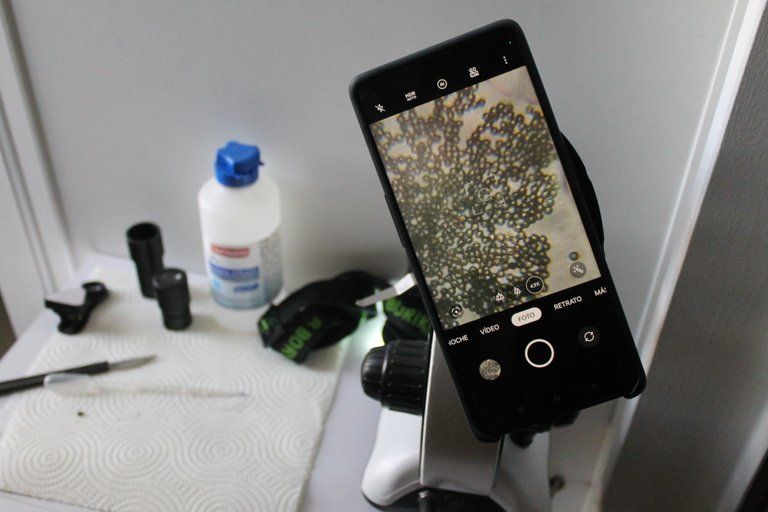
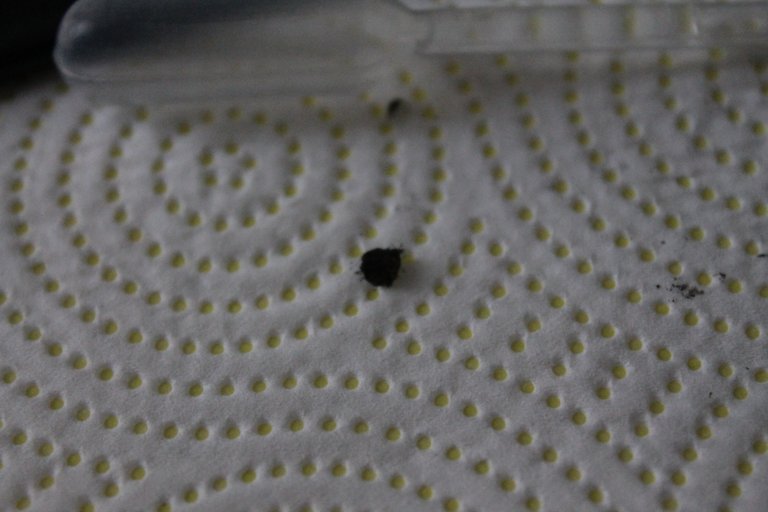
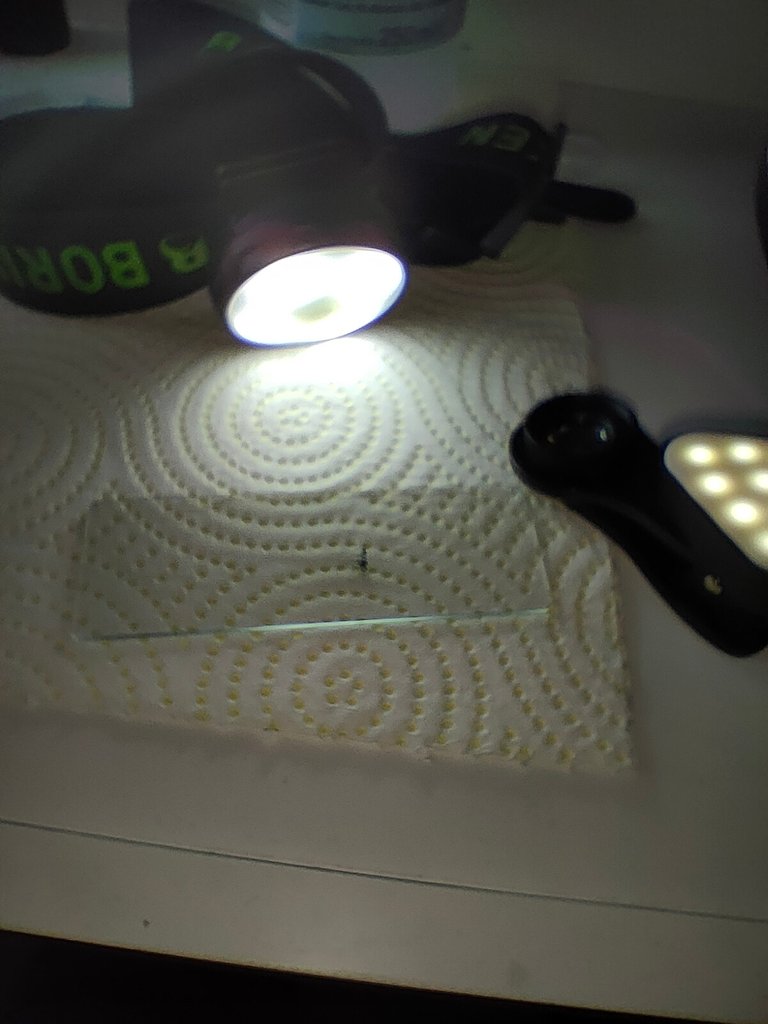

DNA is an organization to foster and DENSIFY NATURE-APPRECIATION which aims to establish REPORTS OF BIODIVERSITY DATA that is contributed by all of us Hiveans and subsequently cataloged.
Therefore DNA searches for HIGH-QUALITY posts that aim to DESCRIBE and determine the BIODIVERSITY AROUND YOU with added EXPLANATIONS and INFORMATION. For these informative posts they offer a CURATION SERVICE using the @dna.org account. It is also a CURATION TRAIL. Just add the #dna TAG if you think that any of your posts is what they are looking for.
GRACIAS POR LEERME / THANKS FOR READING ME (FOTOS DE MI PROPIEDAD / PHOTOS OF MY PROPERTY)🙂🧠🦾👍
Referencias bibliograficas / Sources:
https://es.wikipedia.org/wiki/Rhizopus_stolonifer
https://www.britannica.com/plant/pteropsid
Para citas directas: "" / For direct quotes use: ""
most of the biological and descriptive information was extracted from wikipedia and is indicated by the use of: ""

























